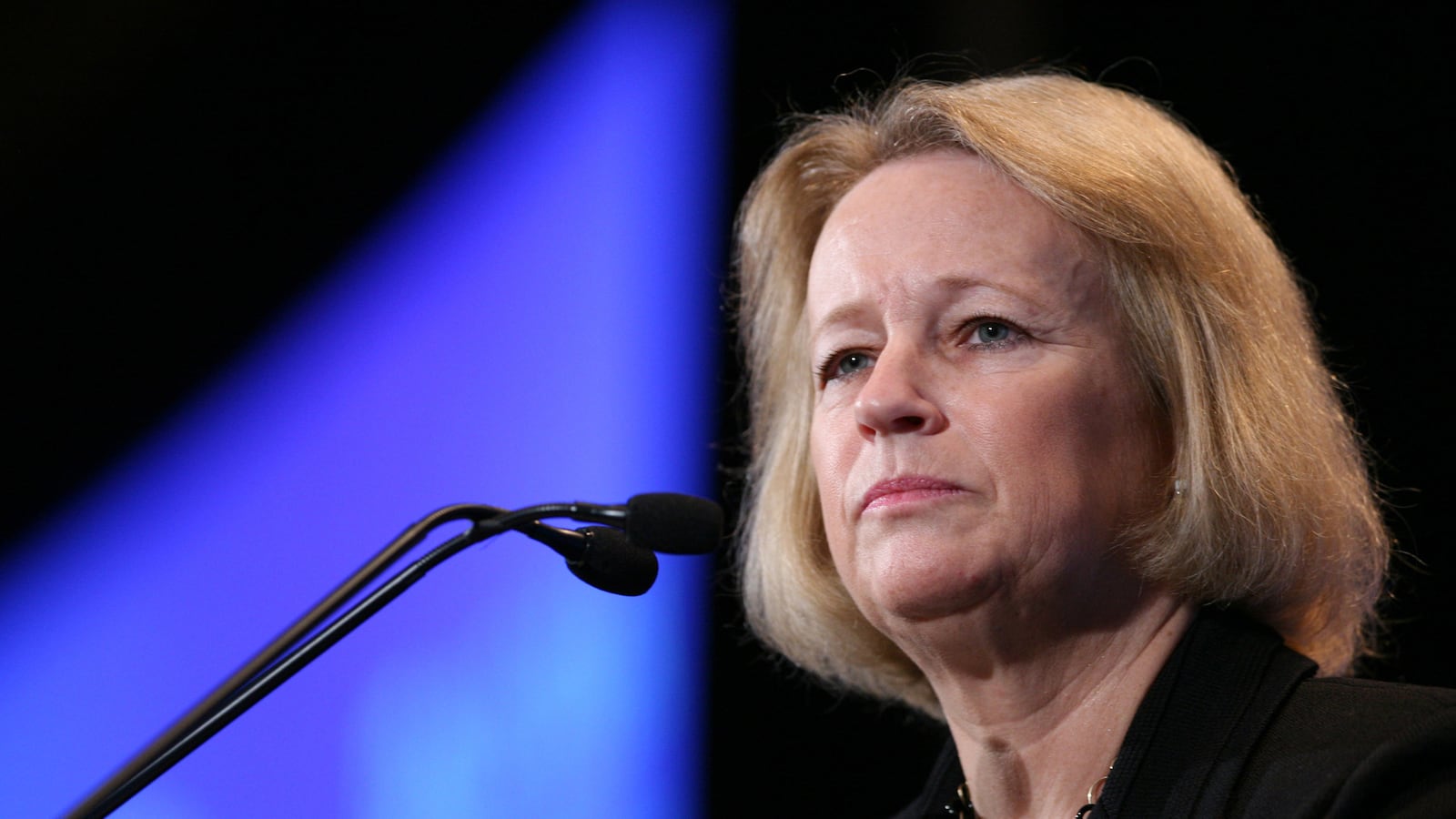
Mary Schapiro, the chairman of the Securities and Exchange Commission and one of the few members of the Obama administration’s economic team to stay through (almost) his entire first term, announced her intention to resign Monday, a move that had been signaled for weeks up until today. Starting in late September, when several of her top advisers left the SEC, speculation heated up that Schapiro herself would leave between the election and the end of the year.
Schapiro leaves behind an agency that has regained its footing, stature, and morale following desultory leadership under its previous two chairmen and its embarrassing lack of action preceding the financial crisis.
Under Schapiro, the SEC, which is usually thought to be the most prominent and important financial regulatory body in the country, brought a huge number of enforcement actions against financial institutions. But it lacked a widely publicized, signature case of going after malfeasance at the root of the financial crisis on the level of previous actions against junk-bond king Michael Milken or analysts who misled investors during the technology boom.
The commission under Schapiro has brought more than 1,400 enforcement actions in 2012 and 2011 alone—earning $11 billion worth of penalties since 2009—but has been criticized for being too eager to settle with the financial institutions it goes after. So, even when it is able to extract a large dollar sum from a bank, like when it settled with Goldman Sachs for $550 million or JPMorgan Chase and Credit Suisse for $417 million for actions stemming from the packaging and sale of faulty mortgage-backed securities, the accused have gotten away without ever admitting guilt. When the commission tried to go after an individual bank executive for improperly marketing mortgage-backed securities, it was not able to secure a conviction.
During Schapiro’s time at the SEC, much of the prosecutorial zeal came from outside the commission. Some of the largest scandals, like LIBOR rate-fixing conspiracy and the collapse of the futures broker MF Global, occurred largely outside the SEC’s jurisdiction. And when it came to big, headline-grabbing insider-trading cases, like the successful prosecution of Raj Rajaratnam and Rajat Gupta, the SEC worked with Preet Bharara, the aggressive and publicity-friendly U.S. attorney in New York City. The biggest settlement that dealt with the housing crisis, the $25 billion National Mortgage settlement, was spearheaded by state attorneys general.
Schapiro also leaves behind two regulatory projects unfinished. Following the financial crisis, there was a shift in financial regulatory thinking toward so-called “macro-prudential” regulation. While some regulatory bodies, like the Federal Reserve, have always been concerned with the safety and soundness of banks, the financial crisis demonstrated just how fragile the entire financial system could be. Under Schaprio, the SEC started to take on some of these foundational, systemic challenges. The most prominent examples that marked Schapiro’s tenure were attempts to limit the risks of high-frequency trading and to make money market mutual funds less susceptible to debilitating runs. In both cases, the SEC’s efforts are still in their infancy. The commission’s proposed “audit trail,” which would track all stock orders, wont’ be up-and-running for several years.
Her efforts to make the $2.6 trillion, one-dollar-a-share money market mutual fund industry more robust against panic-driven investor withdrawals have been two steps forward and one step back. In 2010 Schapiro got the commission to pass rules requiring money market funds to invest in more short-term, liquid assets that would be easier to sell should investors call for large withdrawals, but she failed in her efforts this year to get three of the five SEC commissioners to agree to more overarching legislation.
Her proposed rules would have required either the mutual funds to price their shares at something other than one dollar depending on market conditions (today, money market funds can price their shares at one dollar even if their real price is a little more or a little less) or to put in place capital buffers to protect against large customer withdrawals. When three commissioners came out against the proposed rules in August, Schapiro canceled the vote. Since then, however, the Financial Stability Oversight Council, an interagency group chaired by the Treasury Secretary that can recommend independent regulatory agencies address certain issues, released its own set of proposed money market mutual fund rules closely modeled on Schapiro’s own proposals.
Even if they only come to pass under her successor, more comprehensive surveillance of high-speed trading and stricter rules for money market mutual funds would, on their own, constitute a substantial legacy of reform for Schapiro.
The White House today announced that Elisse Walter, a Democrat appointed in 2008 by President Bush, would take over as chairman. Several names have been bandied about as possible replacements for Schapiro, including Mary J. Miller, who is currently undersecretary for domestic finance in the Treasury Department and Sallie L. Krawcheck, a former Citigroup executive who has become a leading voice for financial reform.






